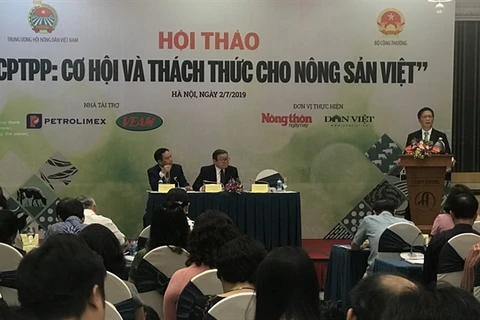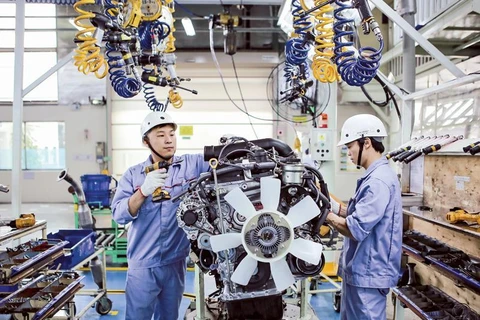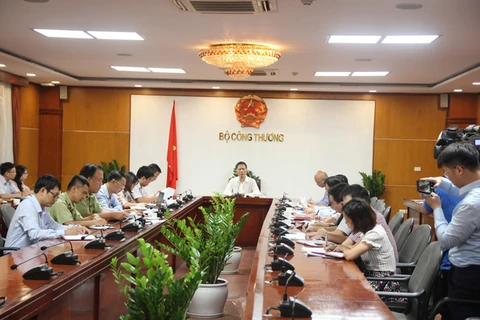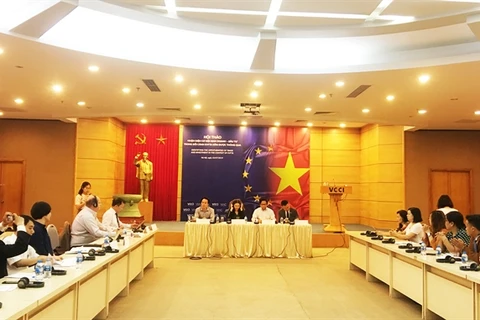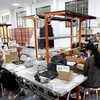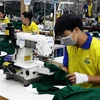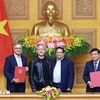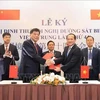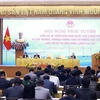Hanoi (VNA) – With the Comprehensive and Progressive Agreement for Trans-Pacific (CPTPP) officially coming into force, Vietnamese exporters should make the most use of the opportunities it brings in Japan, one of Vietnam’s leading trade partners.
Vietnam’s exports to Japan have seen steady growth over the years, hitting 9.68 billion USD in the first half of 2019, up 9.1 percent from the same period last year. Key export items include textile and garment, seafood, machinery, wood products, mobile phones and electronic components.
As of the beginning of May, Japan was Vietnam’s second largest investor, running 4,118 foreign direct investment projects worth 57.3 billion USD, mostly in processing and manufacturing, retail and real estate. An estimated 2,500 Japanese firms, including leading conglomerates, have operated in Vietnam, and many of them plan to expand.
The recent upswing in exports to Japan was thanks to the signing of the CPTPP, of which both Vietnam and Japan are members. Under the CPTPP, Japan agreed to eliminate duties for most Vietnamese agricultural and seafood products.
Japan immediately lifted 86 percent of tariff lines for goods from Vietnam, representing 93.6 percent of the latter country’s exports after the deal went into force. After five years, Vietnam will be exempt from about 90 percent of tariff lines.
The CPTPP is hoped to bring tremendous benefits for both countries, said Deputy Minister of Industry and Trade Tran Quoc Khanh.
The trade deal will allow Japanese enterprises to enter Vietnam’s growing public procurement market, which has been so far closed to foreign providers. Additionally, it would give those working in banking, insurance, construction, logistics, accounting and graphic design – areas Japan holds competitive edges – broader access to the Vietnamese market.
The CPTPP will strengthen Vietnam’s role as a production base for Japanese manufacturers and in return, Vietnamese firms will also receive the same benefits when entering Japan, according to Yuri Sato, Executive Vice President of the Japan External Trade Organisation (JETRO).
Sato added that the agreement imposes strong protection requirements in terms of intellectual property rights and investment protection. For example, foreign companies now have the right to withdraw investment and require fair compensation and legal support if their assets are nationalised. These rules could encourage Japanese firms to ramp up technological exports to Vietnam.
Therefore, the CPTPP is expected to greatly facilitate the flow of trade and investment between the two nations by not only removing tariffs but also creating new business opportunities and allowing reduction of trade and investment procedures.
Shibata Eiji, Vice Chairman of Japan-based AEON Group said Vietnamese goods have great potential in the Japanese market. In 2013, Japan imported Vietnamese tra fish for the first time with a very modest number of 5 tonnes, but imports rose 20 times to 100 tonnes a mere five years later.
AEON wants to double import revenue of Vietnamese products to 500 million USD by 2020 and raise it to 1 billion USD by 2025, the vice chairman noted.
To sustainably boost exports to Japan, Vietnam, first and foremost, needs an effective marketing strategy. The two sides should also provide broader access for each other’s agricultural and seafood products and effectively implement joint initiatives to improve the investment environment and promote Japanese investment in Vietnam.
Minister of Industry and Trade Tran Tuan Anh said Vietnam joining trade agreements like CPTPP will bring more export opportunities; however, the country would confront challenges, particularly growing competition from foreign rivals for agricultural and seafood products.
The minister suggested Vietnamese producers seek partnerships with Japanese firms to utilise their capital and technology, hereby gaining stronger foothold in the Japanese market and playing a greater part in regional and global supply chains. –VNA
VNA

